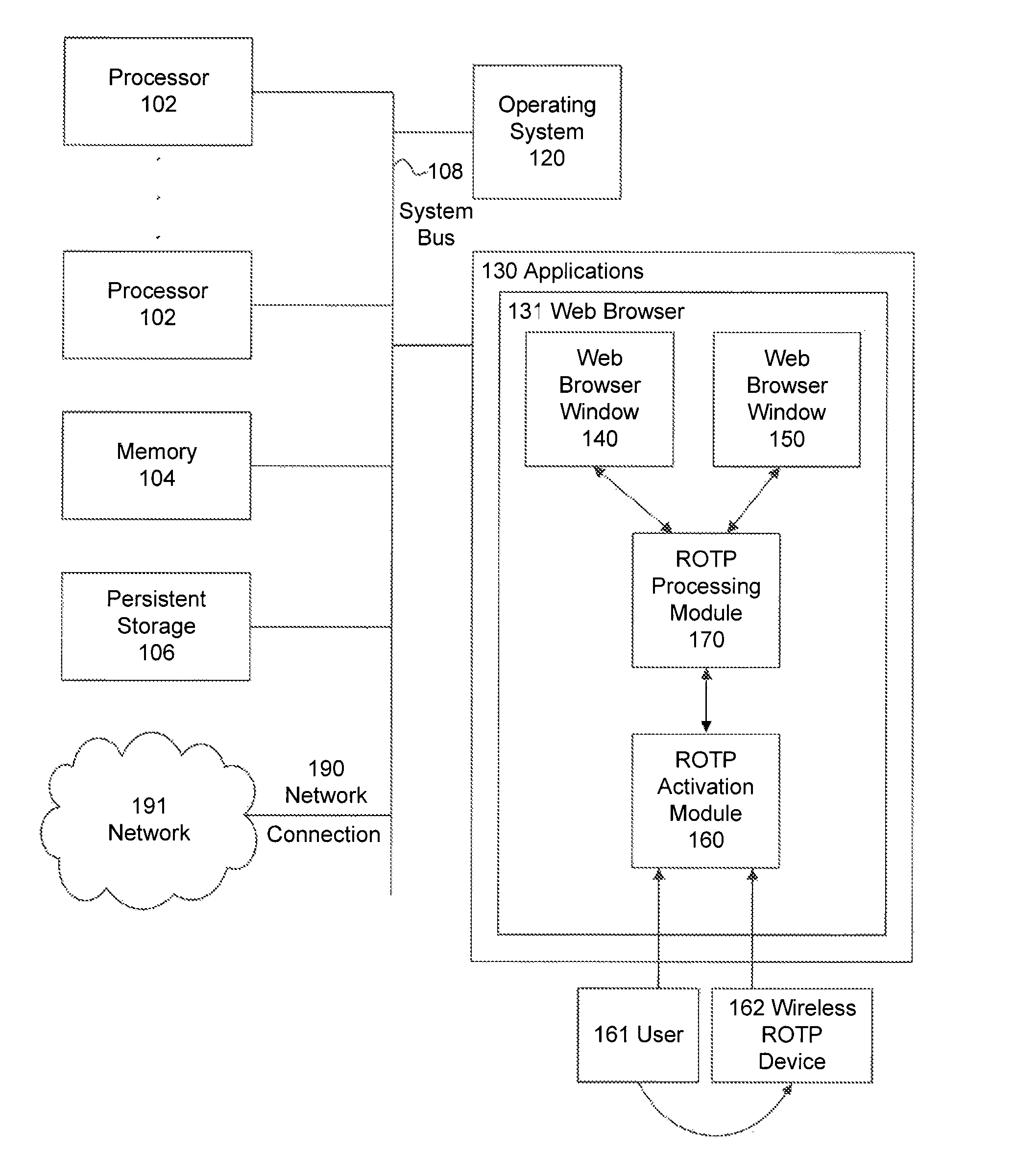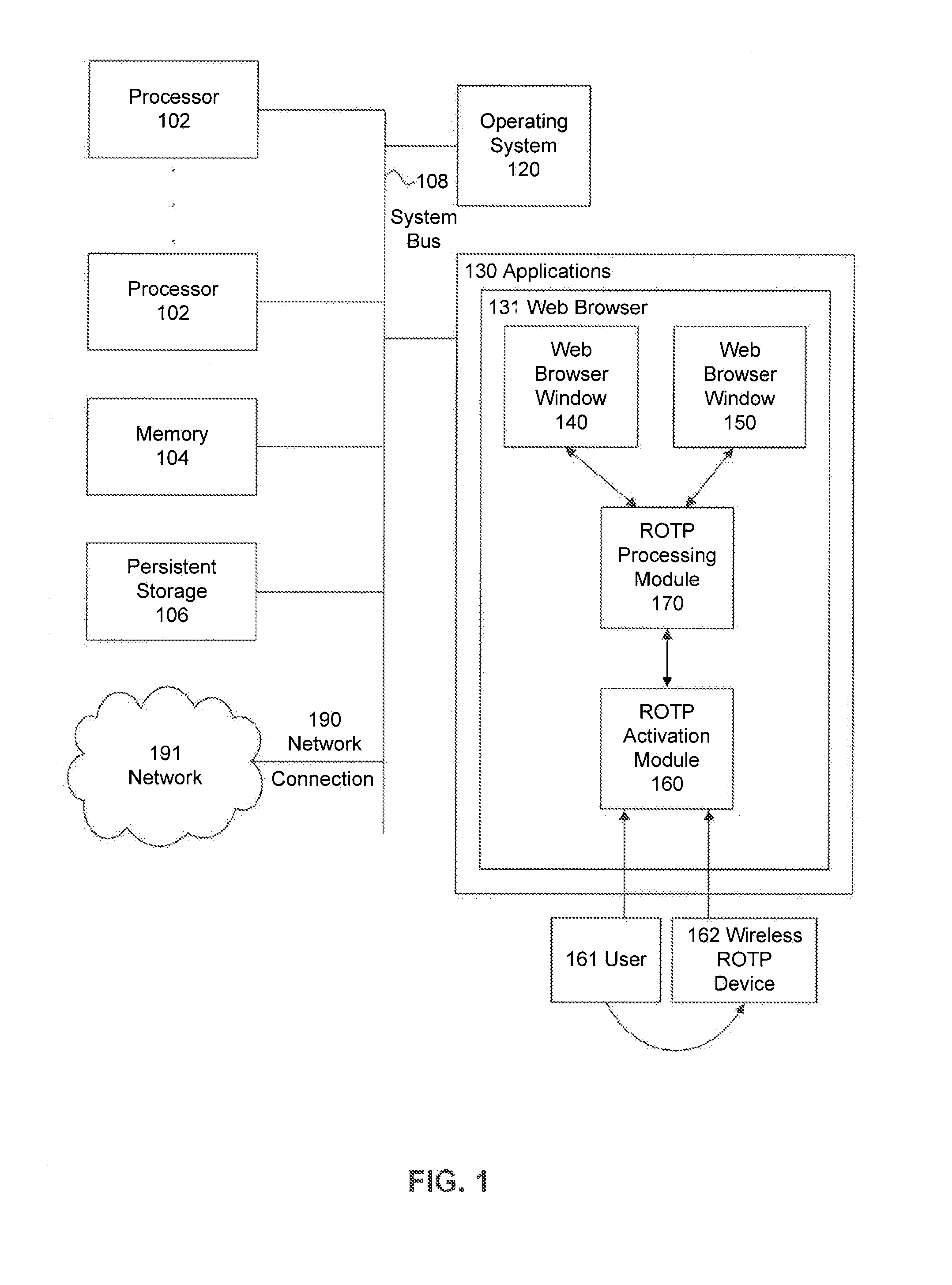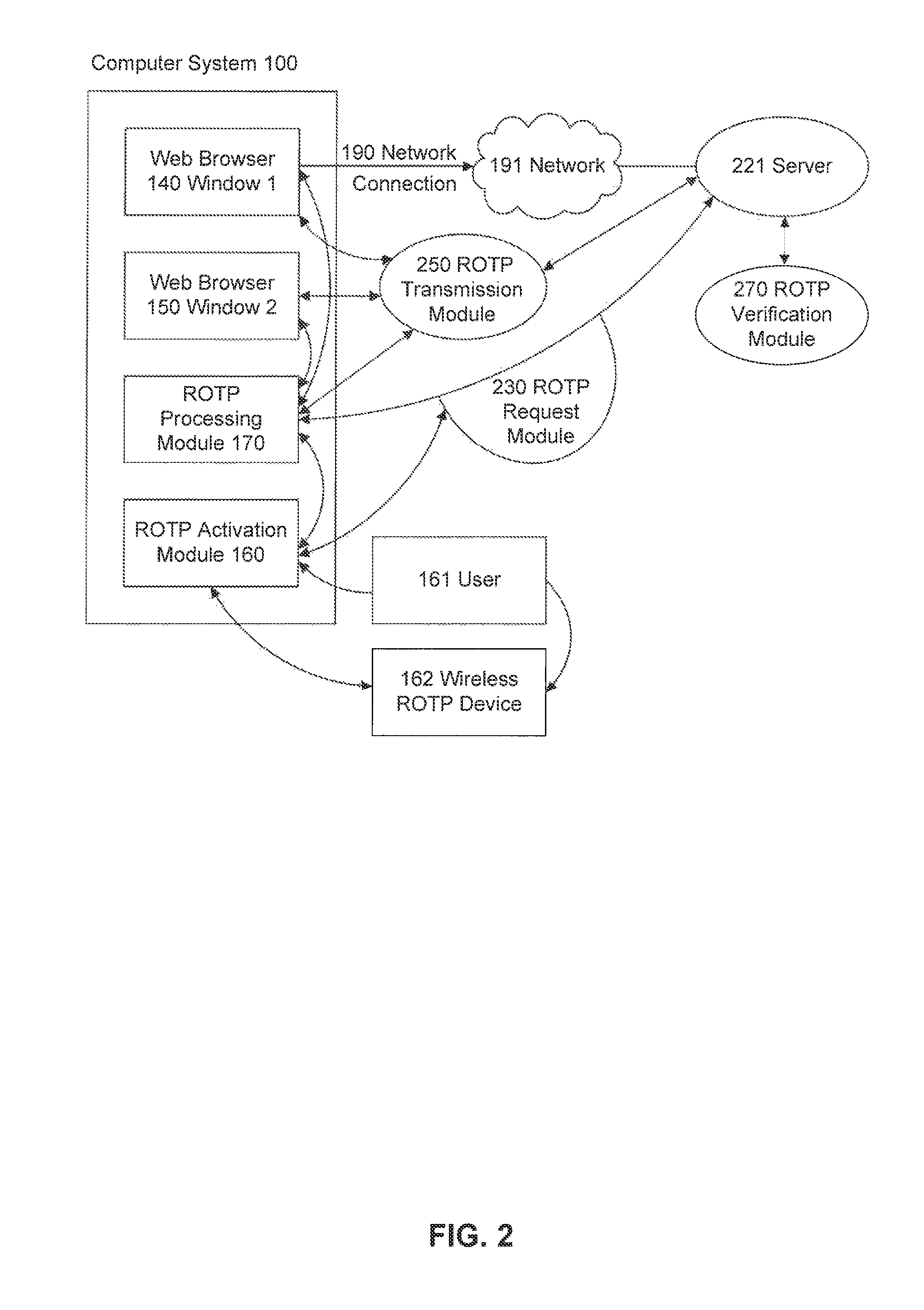Unfortunately, phishers are adapting to the use of OTPs by using real-time man in the middle (MITM) attacks.
Recently, the incidence of real-time MITM attacks has increased.
While the OTP may guarantee to the server that the user is involved, it does not guarantee that the party that submits the OTP is the user as opposed to an MITM attacker.
Furthermore, client-side
software certificates cannot be used when the user logs in from an unknown computer, such as at an
Internet cafe.
This scheme is susceptible to a MITM
phishing attack, however, and in case of such an
attack, the protocol will end with a secure (SSL / TLS) session between the server and phisher, as well as between the phisher and the browser.
However, such schemes are easily seen to be vulnerable to man in the middle (MITM), or real-time, phishing.
This
vulnerability occurs because a MITM phisher can intercept a OTP and pass it along to a server in real-time if a
system that uses an OTP does not use additional security countermeasures.
This discrepancy will render the phished ROTP useless.
Thus, in case of a
phishing attack, the attacker will still be unable to access the user's on-line account, no matter what information is phished from her.
The server will then block access to the phisher and prevent the success of the real-time phishing attempt.
The server expects its URL and / or
certificate to be used in the ROTP generation, but if a phisher is in the middle, the computation of the ROTP will use the phisher's URL instead, resulting in an incorrect ROTP from the server's perspective.
Even if an attacker contaminates the
domain name system (DNS) to control the
name resolution process and has tricked a
certificate authority (CA) to provide it with a faked certificate of a public key under the original server's true name, it still cannot phish.
Phishing is an exploitation of many technologies, side measures, and social and psychological factors, and is an ever evolving
threat.
Clearly, embodiments cannot expect the user to perform a tedious task of
copying the URL (or even a hash of it) into the OTP generator device.
Also, such
copying would be unacceptable from a security point of view since even expert users may be victims to homographic attacks.
Similarly, other methods which require too much effort on the user side are not likely to be employed.
Moreover, research has shown that security tends to be secondary to the main task users have.
When security stands in the way users often perform actions that undermine it.
It does not matter how much naming information (URL,
Certificate, other names) is used, as the problem of keyloggers doing real-time phishing exists since the PPM
algorithm is public.
Another issue is that the configuration of the PPM is based on an approach using a simple hardware token that gives OTPs over time.
Also, the
usability of entering the OTP into the PPM and then getting the resulting hashed-
password into the application has a “
usability issue” that requires too much user operation.
The result of the MAC is assumed to be hard to guess, i.e., embodiments make the standard assumption that the MAC output is unpredictable.
Also, it does not add much security as the
password can still be phished by clever wording on the browser.
Again, the difficulty of this task is because of the pseudorandomness of the MAC function (or that of the truncated output if truncation is applied).
Thus, in an embodiment, the method prevents permitting access by a non-designated server.
Thus, embodiments provide for a method for generating an
authentication value (ROTP) which is useful for a client in getting access at designated server and is not
usable at real-time by non-designated server to impersonate client.
The second requirement, uniqueness, is not always satisfied, e.g., by the attacker contaminating DNS entries so that the browser uses the correct server's URL but is routed to the phisher.
Fortunately, such attacks will not work if the server requires its session with the client to be secure (HTTPS).
Thus, assuming the MITM attacker cannot break the server's public key, he is no more than an observer of encrypted traffic so such an
attack will fail.
As with the URL, when the server's certificate (a
public key certificate signed by a certification authority (CA)) is used as the reflective factor, recognition is satisfied but uniqueness is not in general satisfied since an attacker may present the server's certificate as well as contaminate DNS entries.
Also, as with the URL, such an
attack will not work if the server requires its session with the client to be secure (HTTPS), because the scheme uses implicitly a nested reflective factor (the SSL / TLS
session key wraps the server's certificate).
Additionally, using the server's certificate as the reflective factor foils an attack in which, in addition to contaminating DNS entries, the attacker uses a fake certificate of the server (issued by an untrusted CA).
Indeed, there may potentially be other ways in which a malicious script may abuse the session.
Recognition of the same
IP address on both sides may be complicated by the fact that intermediary devices may be changing the
IP address.
First note that Requirement 2 is not in general satisfied, since the MITM phisher may subvert the routing infrastructure.
Unfortunately, because the server's
IP address is not strongly correlated with the server's certificate, the MITM attacker can complete an attack against a system using the server's IP as a reflective factor even if the server requires a secure (HTTPS) session.
These steps demonstrate that carrying out the attack is very expensive.
He cannot present the user with the correct server's HTTPS URL since this would cause the session to be secure.
Embodiments may involve other methods for communicating the ROTP, although they may be subject to vulnerabilities.
Even without considering the user's last action of
typing the ROTP to the browser, both the Manual and QR-code methods are much more susceptible to a phisher's Different-RF attack than the
communication channel method.
Moreover, usability of both methods above (in particular of the Manual one in which the
user needs to type information into the
smart device) is inferior to that of
wireless communication.
However, this is not too damaging because the SSL connection would be extended from the client to the server and the MITM phisher would not be able to eavesdrop or effectively intervene in the communication.
Secondly, the client should eventually realize that it is at a wrong
web site and log off.
In an embodiment, the reflective factor protocol allows the server to authenticate the client but does not prevent phishing in the strong sense.
General MITB: Some embodiments as described do not protect against a general attacker that totally controls the browser or the
machine since a MITB could eavesdrop or insert messages in the SSL session or request authentications.
However, the attacker will still not be able to complete the protocol without knowing the other factor (i.e., the secret password).
Because of the long random nonce nc this computation cannot be applied offline.
Because the phisher needs to apply the computation online for each user, it significantly limits the number of users that can be attacked simultaneously.
In fact, even the case i=1 (the user only copies one OTP into the application), which requires one million hash computations, is a significant barrier against a large-scale attack.
Still, when i=1 (and usability may dictate that this be the case), this barrier may be insufficient for some applications.
 Login to View More
Login to View More  Login to View More
Login to View More 


